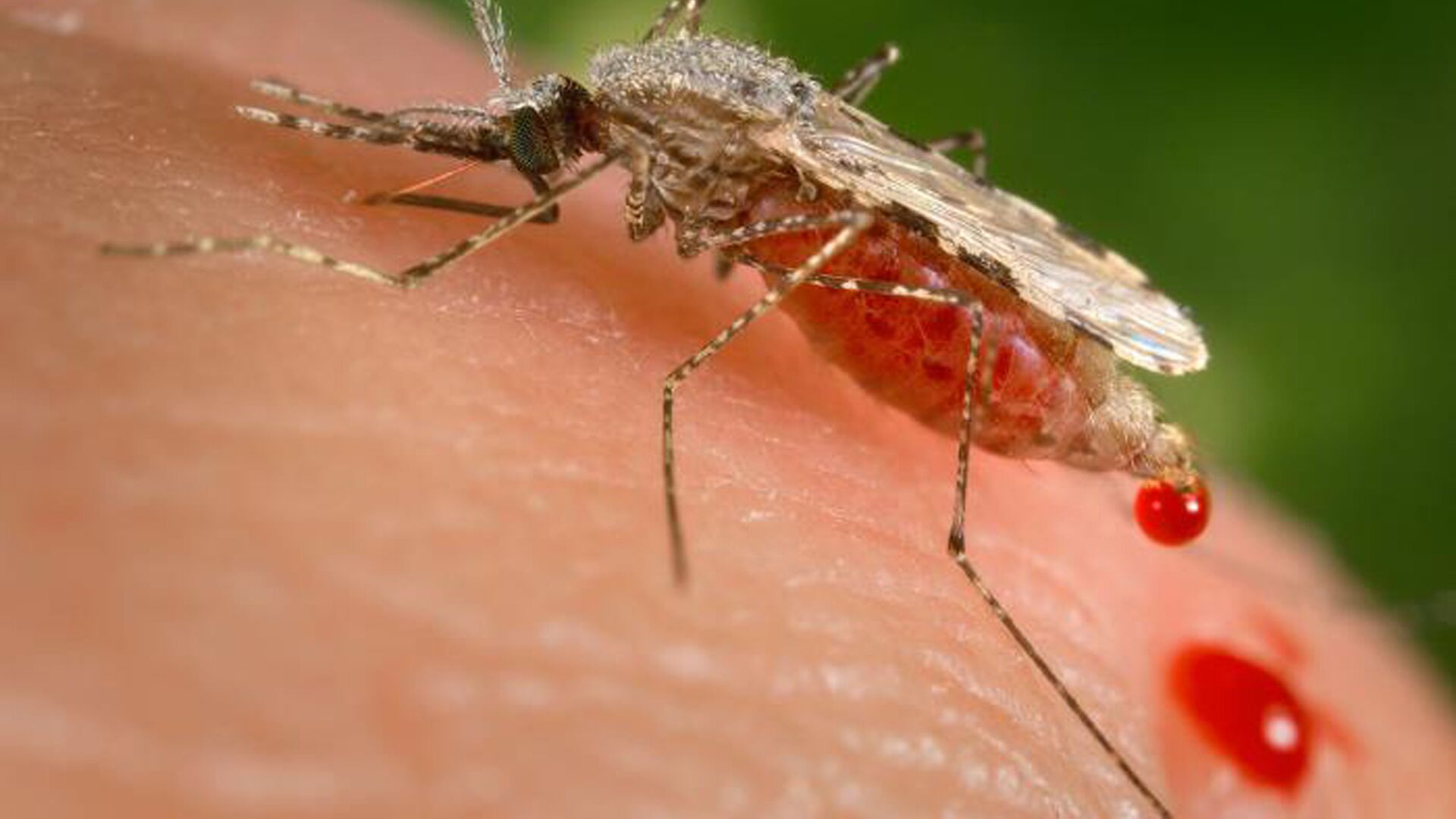https://en.sputniknews.africa/20231122/malaria-might-worsen-in-kenya-due-to-invasive-deadly-mosquito-species-1063729878.html
Malaria Might Worsen in Kenya Due to Invasive Deadly Mosquito Species
Malaria Might Worsen in Kenya Due to Invasive Deadly Mosquito Species
Sputnik Africa
An estimated 3.5 million new clinical cases and 10,700 deaths are reported from malaria in Kenya annually; residents of western Kenya are particularly at risk... 22.11.2023, Sputnik Africa
2023-11-22T17:51+0100
2023-11-22T17:51+0100
2023-11-22T17:51+0100
sub-saharan africa
kenya
east africa
mosquito
malaria
world health organization (who)
djibouti
ethiopia
https://cdn1.img.sputniknews.africa/img/102124/61/1021246125_0:296:3000:1984_1920x0_80_0_0_38b52f74a48924d8cdc0c16fc870838d.jpg
A lethal mosquito species capable of spreading two parasites has landed in Kenya from Ethiopia and is expected to worsen malaria cases, particularly in Northern Kenya, the Centers for Disease Control and Prevention (CDC) stated.The mosquito that transmits the malaria pathogens Plasmodium falciparum and Plasmodium vivax is officially named Anopheles stephensi.The CDC reported that the species have been found in Turkana and Marsabit counties (northern Kenya). Scientists fear that because these mosquitos have been discovered in Lodwar, a significant town on a major land trade route, they may spread even farther.Long-distance truckers frequently use containers, which the mosquito species is known to hide in and use as a breeding ground. Due to climate change, they are adept at taking advantage of built habitats, flourishing in places where they have never before been.Based on recent observations from Djibouti and mathematical modeling, the species has the potential to raise P. falciparum incidence by 50%, the researchers noted.This type of mosquito, according to the WHO, differs from other malaria vectors in that it can survive in both urban and artificial environments. Other malaria vectors often spawn in naturally occurring water bodies found in rural regions.The WHO warns that the rapid urbanization of many African cities, in addition to the invasion and spread of this extremely effective and versatile malaria vector, could undo the progress made in lowering the disease's overall burden, even though the exact role played by An. stephensi in the region's malaria transmission is not known yet.Since malaria is most common in tropical and subtropical regions of the world, Africa is the continent that suffers the greatest burden of the disease, according to the WHO.Roughly 95% of global malaria infections and 96% of deaths were reported on the continent in 2021. Over half of all malaria deaths globally occurred in four African countries: Nigeria, the Democratic Republic of the Congo, Tanzania, and Niger.Moreover, about 80% of all malaria deaths on the continent were in children under the age of five, who are the most susceptible and exposed to the disease.The most distressing feature of these figures is that, in spite of international attempts to eradicate malaria, the illness still exists and continues to have an impact on people's health and means of subsistence throughout the world.However, many nations worldwide voluntarily share their experience in preventing and curing the disease as science advances and preventive measures grow more complex and successful.
https://en.sputniknews.africa/20230820/world-mosquito-day-how-africa-ramps-up-fight-against-malaria-1061473463.html
kenya
east africa
djibouti
ethiopia
Sputnik Africa
feedback@sputniknews.com
+74956456601
MIA „Rossiya Segodnya“
2023
Christina Glazkova
https://cdn1.img.sputniknews.africa/img/07e7/0b/07/1063380906_0:0:673:674_100x100_80_0_0_79628b4d0cd9f29291a57aa13bbf9e7a.jpg
Christina Glazkova
https://cdn1.img.sputniknews.africa/img/07e7/0b/07/1063380906_0:0:673:674_100x100_80_0_0_79628b4d0cd9f29291a57aa13bbf9e7a.jpg
News
en_EN
Sputnik Africa
feedback@sputniknews.com
+74956456601
MIA „Rossiya Segodnya“
Sputnik Africa
feedback@sputniknews.com
+74956456601
MIA „Rossiya Segodnya“
Christina Glazkova
https://cdn1.img.sputniknews.africa/img/07e7/0b/07/1063380906_0:0:673:674_100x100_80_0_0_79628b4d0cd9f29291a57aa13bbf9e7a.jpg
kenya, east africa, mosquito, malaria, world health organization (who), djibouti, ethiopia
kenya, east africa, mosquito, malaria, world health organization (who), djibouti, ethiopia
Malaria Might Worsen in Kenya Due to Invasive Deadly Mosquito Species
Christina Glazkova
Writer / Editor
An estimated 3.5 million new clinical cases and 10,700 deaths are reported from malaria in Kenya annually; residents of western Kenya are particularly at risk, according to the Centers for Disease Control and Prevention.
A lethal
mosquito species capable of spreading two parasites has landed in Kenya from Ethiopia and is expected to worsen malaria cases, particularly in Northern Kenya, the Centers for Disease Control and Prevention (CDC) stated.
The mosquito that transmits the malaria pathogens Plasmodium falciparum and Plasmodium vivax is officially named Anopheles stephensi.
The CDC reported that the species have been found in Turkana and Marsabit counties (northern Kenya). Scientists fear that because these mosquitos have been discovered in Lodwar, a significant town on a major land trade route, they may spread even farther.
Long-distance truckers frequently use containers, which the mosquito species is known to hide in and use as a breeding ground. Due to climate change, they are adept at taking advantage of built habitats, flourishing in places where they have never before been.
Based on recent observations from Djibouti and mathematical modeling, the species has the potential to raise P. falciparum incidence by 50%, the researchers noted.
This type of mosquito, according to the
WHO, differs from other malaria vectors in that it can survive in both urban and artificial environments. Other malaria vectors often spawn in naturally occurring water bodies found in rural regions.
"Where An. stephensi has been reported in the WHO African Region, it has been found to be resistant to many of the insecticides used in public health, posing an added challenge to its control. The invasion of An. stephensi in sub-Saharan Africa – where the burden of malaria is highest and over 40% of the population lives in urban environments – is particularly worrying. Since 2012, An. stephensi is thought to have contributed to a resurgence of malaria in Djibouti City and at least one outbreak of the disease in Ethiopia," the WHO's stated in their World malaria report 2022.
The WHO warns that the rapid urbanization of many African cities, in addition to the invasion and spread of this extremely effective and versatile
malaria vector, could undo the progress made in lowering the disease's overall burden, even though the exact role played by An. stephensi in the region's malaria transmission is not known yet.
Since malaria is most common in tropical and subtropical regions of the world, Africa is the continent that suffers the greatest burden of the disease,
according to the WHO.
Roughly 95% of global malaria infections and 96% of deaths were reported on the continent in 2021. Over half of all malaria deaths globally occurred in four African countries: Nigeria, the Democratic Republic of the Congo, Tanzania, and Niger.
Moreover, about 80% of all malaria deaths on the continent were in children under the age of five, who are the most susceptible and exposed to the disease.
The most distressing feature of these figures is that, in spite of international attempts to eradicate malaria, the illness still exists and continues to have an impact on people's health and means of subsistence throughout the world.
However, many nations worldwide voluntarily share their experience in preventing and curing the disease as science advances and preventive measures grow more complex and successful.



